| کد مقاله | کد نشریه | سال انتشار | مقاله انگلیسی | نسخه تمام متن |
|---|---|---|---|---|
| 4269504 | 1610848 | 2015 | 8 صفحه PDF | دانلود رایگان |
IntroductionHomosexuality is a stable population‐level trait in humans that lowers direct fitness and yet is substantially heritable, resulting in a so‐called Darwinian “paradox.” Evolutionary models have proposed that polymorphic genes influencing homosexuality confer a reproductive benefit to heterosexual carriers, thus offsetting the fitness costs associated with persistent homosexuality. This benefit may consist of a “sex typicality” intermediate phenotype. However, there are few empirical tests of this hypothesis using genetically informative data in humans.AimThis study aimed to test the hypothesis that common genetic factors can explain the association between measures of sex typicality, mating success, and homosexuality in a Western (British) sample of female twins.MethodsHere, we used data from 996 female twins (498 twin pairs) comprising 242 full dizygotic pairs and 256 full monozygotic pairs (mean age 56.8) and 1,555 individuals whose co‐twin did not participate. Measures of sexual orientation, sex typicality (recalled childhood gender nonconformity), and mating success (number of lifetime sexual partners) were completed.Main Outcome MeasureVariables were subject to multivariate variance component analysis.ResultsWe found that masculine women are more likely to be nonheterosexual, report more sexual partners, and, when heterosexual, also report more sexual partners. Multivariate twin modeling showed that common genetic factors explained the relationship between sexual orientation, sex typicality, and mating success through a shared latent factor.ConclusionsOur findings suggest that genetic factors responsible for nonheterosexuality are shared with genetic factors responsible for the number of lifetime sexual partners via a latent sex typicality phenotype in human females. These results may have implications for evolutionary models of homosexuality but are limited by potential mediating variables (such as personality traits) and measurement issues. Burri A, Spector T, and Rahman Q. Common Genetic Factors among Sexual Orientation, Gender Nonconformity, and Number of Sex Partners in Female Twins: Implications for the Evolution of Homosexuality. J Sex Med 2015;12:1004–1011.
Journal: The Journal of Sexual Medicine - Volume 12, Issue 4, April 2015, Pages 1004–1011
